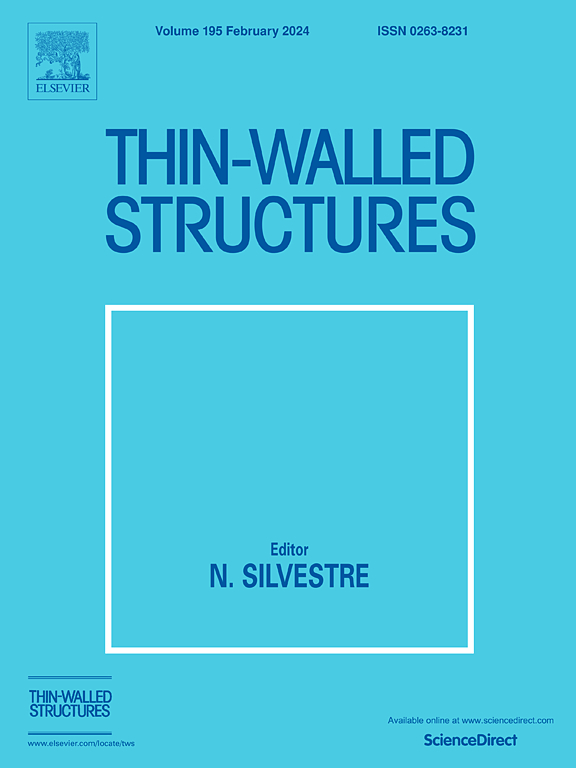Geometrical nonlinearity infill topology optimization for porous structures using the parametric level set method
IF 5.7
1区 工程技术
Q1 ENGINEERING, CIVIL
引用次数: 0
Abstract
Recently, porous structures have received a wide of attention in engineering applications, due to outstanding mechanical properties, like the lightweight, enhanced strength-to-weight ratio, and robustness in material defects. However, the study on topology optimization for infill designs in porous structures considering the geometrical nonlinearity are in limited. In the current work, the main intention is to propose a Geometrical Nonlinearity Infill Topology Optimization (GN-ITO) method for the design of porous structures to achieve superior performance that can satisfy higher engineering demands. Firstly, the Parametric Level Set Method (PLSM) with numerical stability and high effectiveness is employed, where a boundary implicit description model is used for the representation of structural topology. Secondly, the constraint strategy is constructed for controlling the generation of local structural features using a modified Heaviside function, where local volume constraints for all finite elements are aggregated by implementing an upper limitation to generate porous infill pattern in design domain. Thirdly, the finite element formulation for geometrical nonlinearity in design domain is established using the Newton-Raphson method to solve unknown structural responses, subject to the large deformation assumption. In addition, the mathematical optimization formulation for the GN-ITO is developed for implementing infill designs of porous structures, where sensitivity analysis of the objective function with respect to design variables, namely expansion coefficients, is derived using the Lagrange adjoint method. Finally, several numerical examples are tested to demonstrate the effectiveness and advantages of the proposed GN-ITO method through static analysis and comparisons of diverse design parameters.
求助全文
约1分钟内获得全文
求助全文
来源期刊

Thin-Walled Structures
工程技术-工程:土木
CiteScore
9.60
自引率
20.30%
发文量
801
审稿时长
66 days
期刊介绍:
Thin-walled structures comprises an important and growing proportion of engineering construction with areas of application becoming increasingly diverse, ranging from aircraft, bridges, ships and oil rigs to storage vessels, industrial buildings and warehouses.
Many factors, including cost and weight economy, new materials and processes and the growth of powerful methods of analysis have contributed to this growth, and led to the need for a journal which concentrates specifically on structures in which problems arise due to the thinness of the walls. This field includes cold– formed sections, plate and shell structures, reinforced plastics structures and aluminium structures, and is of importance in many branches of engineering.
The primary criterion for consideration of papers in Thin–Walled Structures is that they must be concerned with thin–walled structures or the basic problems inherent in thin–walled structures. Provided this criterion is satisfied no restriction is placed on the type of construction, material or field of application. Papers on theory, experiment, design, etc., are published and it is expected that many papers will contain aspects of all three.
 求助内容:
求助内容: 应助结果提醒方式:
应助结果提醒方式:


